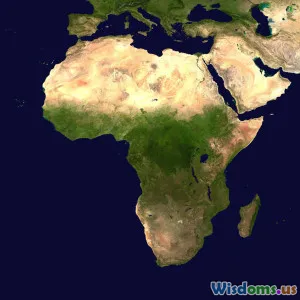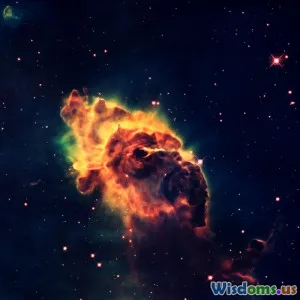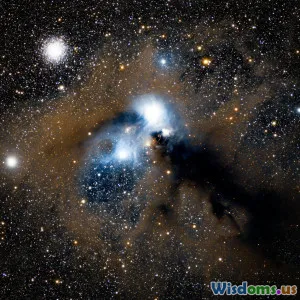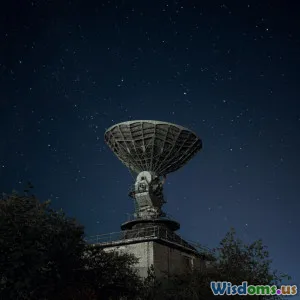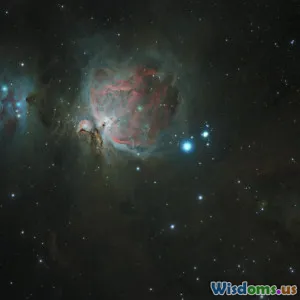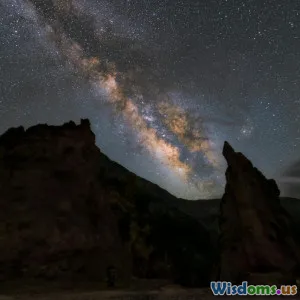
The Mysteries of the Milky Way
8 min read Explore the enigmatic Milky Way galaxy—its secrets, structure, and cosmic phenomena shaping our understanding of the universe. (0 Reviews)
The Mysteries of the Milky Way
The night sky has fascinated humanity for millennia, but none of its wonders captures our collective imagination quite like the Milky Way itself. This sprawling galaxy, home to our solar system, is more than a simple star cluster; it's a complex cosmic city bustling with secrets waiting to be understood. What mysteries does this vast island of stars hold? How does studying the Milky Way expand our understanding of the universe? Let’s embark on a journey through the enigmatic heart of our galaxy.
Introduction
From ancient myths to modern scientific pursuits, the Milky Way has been a beacon pulling us towards celestial discovery. Visible as a hazy river of light stretching across the sky, this galaxy comprises about 100 to 400 billion stars, alongside planets, nebulae, and dark matter. Yet, despite centuries of astronomical study, many features remain elusive. For example, what exactly lies at its center? How did it form and evolve? And what forces govern its sprawling spiral arms?
As we delve deeper into these questions, astronomers deploy ever-more sensitive technology—from radio telescopes to space observatories—gradually peeling back the layers of mystery.
The Structure and Scale of the Milky Way
A Galactic City of Stars
The Milky Way measures approximately 100,000 to 120,000 light-years in diameter and is a barred spiral galaxy. Its central bar, a dense region of stars, cuts across its middle, with four major spiral arms, like Perseus and Sagittarius, stretching outward. These arms contain dense molecular clouds rich with gas and dust—the raw materials for star formation.
Our solar system itself resides in a relatively small arm called the Orion-Cygnus Spur, about 27,000 light-years from the galactic center. Considering the enormity of such distances helps contextualize the complexity scientists face when mapping our home's true layout.
Hidden in Shadows: The Role of Dark Matter
One of the most significant mysteries of the Milky Way is its dark matter halo. Dark matter is an invisible form of matter that neither emits nor absorbs light but exerts gravitational pull. Without it, the Milky Way couldn’t hold together; its stars would fly apart.
Studies estimate that dark matter makes up roughly 90% of the galaxy’s total mass. However, identifying where and how it interacts remains a prohibitive challenge. Current surveys like the Gaia mission aim to chart precise stellar motions to infer the underlying dark matter distribution, hoping to unlock these secrets gradually.
The Enigmatic Galactic Center
Sagittarius A*: Our Supermassive Black Hole
At the gravitational core of the Milky Way lies Sagittarius A*, a supermassive black hole approximately 4 million times the mass of our sun. This enigmatic feature was theorized decades ago but only in recent years have astronomers captured direct evidence through methods such as stellar orbit tracking and radio imaging.
The black hole isn’t a vacuum cleaner in space but a dominant mass around which stars, dust, and gas migrate. Its influence shapes the evolution of the galactic bulge—the dense star-packed central region.
Powerful Cosmic Phenomena
Near Sagittarius A*, intense gravitational forces stimulate energetic phenomena like X-ray flares and Gamma-ray bursts. One of the fascinating aspects is the Fermi Bubbles—enormous lobes of energetic particles extending above and below the galactic plane, likely remnants of past activity from the black hole or starburst events.
Understanding these energetic structures grants insight into galaxy evolution mechanisms and how supermassive black holes can influence their environments.
Star Formation and Nebulae: Birthplaces of the Cosmos
Stellar Nurseries within the Arms
The spiral arms of the Milky Way act as cradles for newborn stars. Dense molecular clouds coil amidst these arms, with notable examples like the Orion Nebula and Eagle Nebula. The famous “Pillars of Creation” within the Eagle Nebula illustrate complex interactions of gas and gravity creating new stellar bodies.
Star formation is a cyclical marvel—dust and gases collapse under gravity, triggering nuclear fusion in fledgling stars, often accompanied by spectacular outflows and radiation shaping the surrounding space.
The Role of Cosmic Dust
Though obscuring visible light, cosmic dust within the Milky Way is essential to its fabric. This dust facilitates molecule formation, including complex organic compounds, and influences star formation rates. Infrared astronomy has been crucial in penetrating dust clouds and revealing star-forming regions otherwise hidden from traditional optical telescopes.
Recent Discoveries and Future Prospects
With the advent of modern missions such as the European Space Agency’s Gaia satellite, astronomers have obtained unprecedented precision in mapping star motions, revealing sub-structures in the halo and disc.
Discoveries like stellar streams suggest that the Milky Way has cannibalized smaller galaxies in its past, weaving them into its vast structure. This ongoing galactic assimilation provides clues about the broader cosmic web.
Looking forward, projects like the James Webb Space Telescope (JWST) promise insights into the earliest moments of star formation in our own galaxy, bridging the known with the unknown.
Conclusion
The Milky Way remains one of the most captivating subjects of cosmic research, blending beauty with profound scientific challenge. As technology evolves, so will our understanding, transforming mysteries into knowledge.
Our galaxy isn’t just a place—it’s a dynamic and ever-changing system, holding clues about the universe's origin, life’s potential, and the nature of reality itself.
Whether you look up at a clear night sky or peer through a telescope, the sparkling band across the heavens symbolizes the infinite frontiers still waiting for us to discover.
The mysteries of the Milky Way invite anyone with curiosity to explore, learn, and marvel—affirming that the quest for knowledge is as boundless as the stars themselves.
Rate the Post
User Reviews
Popular Posts










